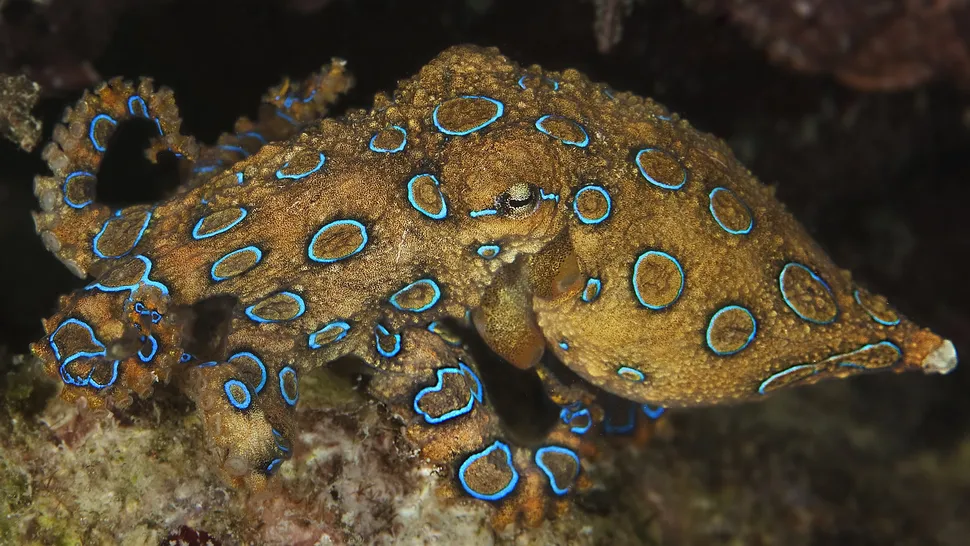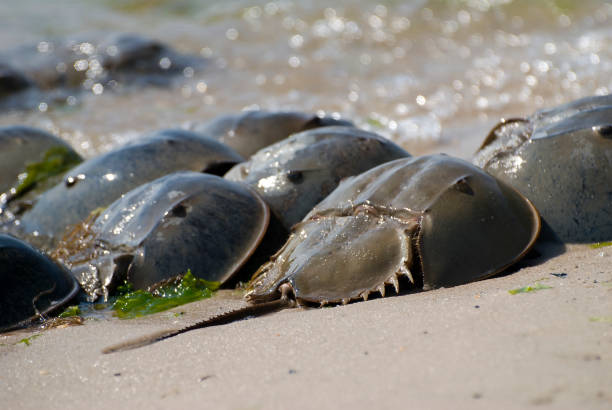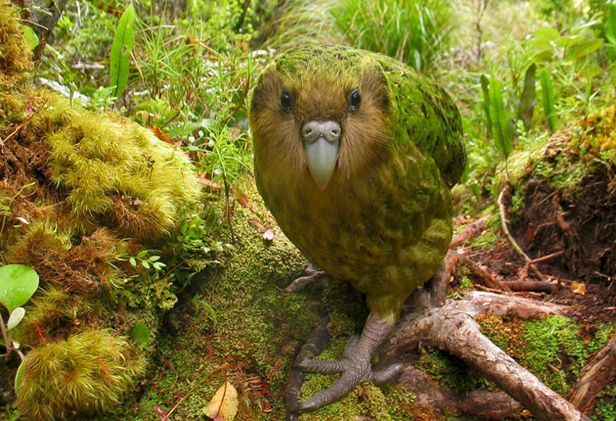The ocean is a world of contradiction — vast yet intimate, serene yet violent, beautiful yet perilous. Its surface glimmers with tranquility, but beneath that shimmering blue lies a kingdom of power and mystery. Some of the ocean’s most dangerous creatures wear disguises of charm and elegance. Their colors dazzle, their movements mesmerize, and their faces seem almost innocent — until you learn the truth.
There’s a haunting poetry in the way beauty and danger coexist underwater. The same coral reefs that shimmer like rainbows also hide venomous hunters. The same translucent jellyfish that dance like drifting lanterns can kill with a single brush. These creatures are living paradoxes — exquisite, fragile, and fatal.
Let’s dive deep into this shimmering abyss and meet sixteen of the ocean’s cutest but deadliest inhabitants — beings that remind us how deceptive beauty can be, and how life beneath the waves thrives on balance between allure and annihilation.
1. Blue-Ringed Octopus – The Tiny Jewel of Death
At first glance, the Blue-Ringed Octopus looks like something from a dream. Its delicate skin glows with iridescent yellow, and when threatened, electric blue rings pulse like warning lights. Barely the size of a golf ball, it’s one of the smallest octopuses on Earth — and one of the most lethal.
Hidden within its saliva is tetrodotoxin, a neurotoxin powerful enough to kill 26 adult humans within minutes. The venom blocks nerve signals, leading to paralysis and respiratory failure. There is no known antidote.
Yet the Blue-Ringed Octopus doesn’t seek conflict. It’s shy, curious, and only attacks when provoked. Watching it move across a tide pool is hypnotic — its gentle glide, the rhythmic shimmer of its rings, the subtle intelligence in its eyes. It’s a masterpiece of evolution: so beautiful you want to touch it, and so deadly that a single touch could end your life.
2. Pufferfish – The Adorable Assassin
Round, clumsy, and wide-eyed, the pufferfish looks like the underwater version of a cartoon character. When threatened, it inflates into a perfect ball, floating awkwardly like a balloon. But beneath that cute act of self-defense lies one of nature’s most potent toxins.
Like the Blue-Ringed Octopus, the pufferfish carries tetrodotoxin, concentrated in its organs and skin. This toxin is 1,200 times more deadly than cyanide. Just one fish can contain enough poison to kill 30 adult humans.
Despite this, pufferfish are a culinary delicacy in Japan, known as fugu. Only licensed chefs are allowed to prepare it, because one mistake could mean instant death.
The irony is almost poetic — the fish’s innocence is its greatest camouflage. When you see one bobbing through coral reefs, its big eyes following your movement, it’s hard to imagine that behind that adorable face lies one of the ocean’s most efficient chemical weapons.
3. Cone Snail – The Beautiful Assassin in a Shell
It’s easy to overlook a cone snail. They move slowly, their spiral shells decorated with intricate patterns that shimmer like marble. But make no mistake — this beautiful little mollusk is a silent killer.
Cone snails possess a harpoon-like tooth connected to a venom gland. With lightning speed, they shoot the tooth into prey, injecting a cocktail of neurotoxins that cause paralysis almost instantly. Some species can even kill humans.
Divers call them “cigarette snails,” because if you’re stung, you’ll have just enough time to smoke one cigarette before the venom shuts down your body. There is no antivenom.
The deadliest species, the Geographer Cone, can fire its venom through gloves and wetsuits. It’s a perfect example of deceptive beauty — a creature that looks like a seashell collector’s prize, but hides one of the most complex toxins ever discovered by science.
4. Box Jellyfish – The Ghost of the Sea
There’s something ethereal about a jellyfish — transparent, drifting, weightless. The Box Jellyfish takes that beauty to another level. It looks like a fragile glass sculpture, glowing faintly in tropical waters. Yet it is among the most lethal animals on Earth.
Its tentacles, trailing like fine threads, are armed with nematocysts — microscopic harpoons that inject venom capable of stopping a human heart within minutes. Victims often experience excruciating pain, cardiac arrest, and even death before reaching shore.
Found mainly around northern Australia and Southeast Asia, the Box Jellyfish is almost invisible underwater. Its beauty is haunting — you might never see it until it’s too late. Scientists have described it as “the world’s most venomous creature,” yet in its own way, it’s peaceful, gliding silently through sunlit water like a spirit from another world.
5. Stonefish – The Master of Disguise
You might think it’s just a rock. That’s the deadly trick of the Stonefish — a master of camouflage. Covered in mottled brown and green skin, it blends perfectly with the seabed, waiting patiently for prey to wander too close.
But step on it, and you’ll feel agony beyond imagination. The Stonefish’s dorsal spines inject venom that can cause paralysis, tissue necrosis, and cardiac failure. Without prompt treatment, it can be fatal.
Its disguise is perfect — even experienced divers have mistaken it for coral rubble. Yet beneath its rough exterior lies a creature of quiet brilliance. It doesn’t chase, it doesn’t roar — it waits. Its stillness is its weapon, its ugliness its shield.
Ironically, that rough, rock-like appearance has an odd beauty — a reminder that even the ocean’s most monstrous killers are sculpted by purpose and perfection.
6. Blue Dragon (Glaucus atlanticus) – The Ocean’s Tiny Angel of Death
The Blue Dragon looks like something from a fantasy novel — a tiny, winged creature that floats upside down on the ocean’s surface, its silver-blue body shimmering like liquid light. Only about 3 centimeters long, it’s impossibly beautiful — and incredibly dangerous.
This sea slug feeds on the venomous Portuguese Man o’ War, storing its prey’s stinging cells in its own tissues. When threatened, it releases that same venom in even higher concentrations.
Its sting can cause excruciating pain, blistering, and allergic shock. But its elegance is undeniable — delicate finger-like appendages spread like wings, catching sunlight as it drifts across the waves.
The Blue Dragon is both angelic and terrifying — a symbol of how the ocean turns even fragility into power.
7. Lionfish – The Striped Predator
Few marine creatures are as visually stunning as the Lionfish. With its long, feathery fins and vivid stripes, it looks like an underwater firework. But those fins are lined with venomous spines capable of causing intense pain, nausea, and even heart failure.
Native to the Indo-Pacific, Lionfish have now invaded the Atlantic and Caribbean, where they wreak havoc on native ecosystems. Their beauty hides an ecological disaster — each lionfish can reduce local fish populations by 90%.
When it moves, its fins fan out like royal robes. It doesn’t chase prey — it dances. That hypnotic motion lures fish closer, only for the lionfish to strike with deadly precision. It’s a predator cloaked in elegance, a reminder that grace and danger often go hand in hand.
8. Irukandji Jellyfish – The Invisible Assassin
The Irukandji Jellyfish is almost impossible to see — smaller than your thumbnail, it’s one of the tiniest jellyfish in the world. Yet its sting causes one of the most excruciating syndromes known to medicine: Irukandji syndrome.
Victims experience unbearable pain, vomiting, muscle cramps, and an overwhelming sense of impending doom — as if their body knows death is near. Many survivors say it’s the worst pain imaginable.
These jellyfish drift silently off the coasts of northern Australia, nearly invisible to swimmers. Their beauty lies in their fragility — a transparent body no thicker than a soap bubble, gliding effortlessly through sunlight. It’s astonishing that something so delicate could command such power.
9. Flower Urchin – The Deceptive Bloom
Imagine a sea urchin that looks like a coral blossom. The Flower Urchin’s pastel colors and petal-like appendages give it a gentle, almost romantic appearance. But those “petals” hide venomous spines that deliver a potent neurotoxin capable of causing paralysis or death.
Found in tropical Indo-Pacific waters, the Flower Urchin’s beauty is a trap. When divers or swimmers accidentally brush against it, they’re struck by sudden pain and muscle contractions.
The juxtaposition is surreal — a creature so lovely it could decorate a reef like a bouquet, yet capable of ending a life in moments. It’s a floral mirage, a bloom that bites.
10. Sea Snake – The Graceful Serpent of the Deep
Elegant, slender, and hypnotically patterned, the Sea Snake glides through coral reefs like a living ribbon. It’s one of the most graceful swimmers in the ocean — and one of the most venomous creatures on Earth.
Its venom is up to ten times more potent than a cobra’s, though sea snakes rarely bite humans unless provoked. They breathe air, yet spend most of their lives underwater, using specialized lungs and scales adapted for marine life.
Their movements are mesmerizing — smooth, fluid, almost artistic. Watching a sea snake glide through sunlight-filtered water feels peaceful… until you remember that a single bite contains enough venom to kill several people.
Beauty and lethality coexist perfectly within its sinuous form.
11. Portuguese Man o’ War – The Floating Illusion
From afar, the Portuguese Man o’ War looks like a delicate jellyfish — its gas-filled, violet-blue sail gliding on the surface of the sea. But it’s not a single creature; it’s a colony of specialized organisms working together as one.
Its tentacles can reach up to 165 feet long and are covered in stinging cells that inject venom powerful enough to paralyze fish — and cause excruciating pain in humans.
Despite its lethality, the Man o’ War is mesmerizingly beautiful. The purples and blues shimmer like glass in the sunlight, giving it the appearance of a floating jewel. But beneath that allure lies a ruthless predator, drifting wherever the wind takes it, leaving trails of venom in its wake.
12. Crown-of-Thorns Starfish – The Coral Killer
The Crown-of-Thorns Starfish looks like a living gemstone. Its body glows with purples, pinks, and oranges, and its arms are studded with long, venomous spines. It’s striking, almost regal — and devastating.
This starfish feeds on coral, and during outbreaks, it can destroy entire reef systems. Its venom causes intense pain and swelling in humans, but its ecological impact is even more frightening.
In the underwater kingdom, it’s both a villain and a force of renewal — clearing old coral to make space for new growth, but when unchecked, it turns paradise into ruin. Its beauty is undeniable, yet it’s the beauty of destruction — elegant, relentless, and indifferent.
13. Sea Anemone – The Flower That Bites
Soft, radiant, and seemingly harmless, the sea anemone looks like an underwater blossom swaying with the current. Its vibrant tentacles wave invitingly, attracting small fish seeking shelter — and sealing their fate.
Each tentacle is lined with stinging cells that paralyze prey instantly. Clownfish, immune to the sting thanks to a special mucus coating, famously live among them, forming one of nature’s most endearing partnerships.
For all its beauty, the sea anemone is a predator — its gentle motions conceal a trap of exquisite precision. Watching it feed is like witnessing a flower come alive to devour its admirer.
14. Stargazer Fish – The Electric Ambusher
Buried beneath the sand with only its eyes and mouth exposed, the Stargazer Fish lies in wait. It’s not conventionally cute, but there’s something oddly charming about its face — wide, flat, and perpetually gazing upward, as if in silent wonder.
But this “dreamy” fish hides a shocking secret. It’s armed with electric organs capable of stunning prey and venomous spines that can deliver a painful sting.
When a small fish passes overhead, the Stargazer strikes with lightning speed, swallowing its victim whole. Its appearance may inspire a smile, but its hunting style reveals the raw savagery of survival.
In its stillness and subtle menace, the Stargazer embodies the ocean’s strange blend of innocence and danger.
15. Cuttlefish – The Hypnotist of the Sea
With its big, intelligent eyes and gentle movements, the cuttlefish seems endearing — almost alien in its curiosity. But beneath its beauty lies a mesmerizing weapon: the ability to hypnotize.
Cuttlefish use chromatophores — specialized pigment cells — to flash waves of color across their skin. When they hunt, these pulsating lights disorient prey, luring them closer before the cuttlefish strikes with precision.
Their intelligence rivals that of octopuses. They can solve puzzles, remember patterns, and change both texture and color to disappear instantly. They are shapeshifters, hypnotists, and assassins in one.
Their charm lies in their mystery — eyes that seem to understand, colors that feel like emotion, and a grace that hides lethal intent.
16. Leopard Seal – The Playful Predator
With its sleek, spotted coat and curious eyes, the Leopard Seal looks like a marine puppy. But behind that charm lies one of Antarctica’s most fearsome predators.
Leopard Seals feed on penguins, fish, and even other seals. Their jaws are powerful enough to crush bones, and they’ve been known to attack humans who venture too close.
Yet they’re also incredibly intelligent and playful. Divers describe encounters that feel almost magical — the seal circling curiously, blowing bubbles, or offering gifts of dead penguins. It’s a chilling reminder that predation and playfulness can coexist in a single, breathtaking creature.
They are the embodiment of the ocean’s contradictions: adorable, inquisitive, and deadly beyond measure.
The Dual Nature of the Deep
The ocean’s beauty is not gentle. It’s wild, raw, and honest. Every delicate fin, every shimmering pattern, every pulse of light serves a purpose — to hunt, defend, survive. The creatures that charm us most are often those whose beauty hides danger, whose gentleness conceals power.
We admire them because they remind us of ourselves — the constant dance between vulnerability and strength, between grace and ferocity. The ocean doesn’t separate beauty from danger; it unites them.
In the end, the “cute but deadly” marine creatures are not villains. They are masterpieces of adaptation — living proof that life’s most enchanting designs are often its most dangerous.
Their elegance is their weapon, their charm their camouflage. And as we watch them glide through the blue vastness, we’re reminded that every shimmer, every spark of beauty in the sea carries the echo of survival — the eternal song of life beneath the waves.






